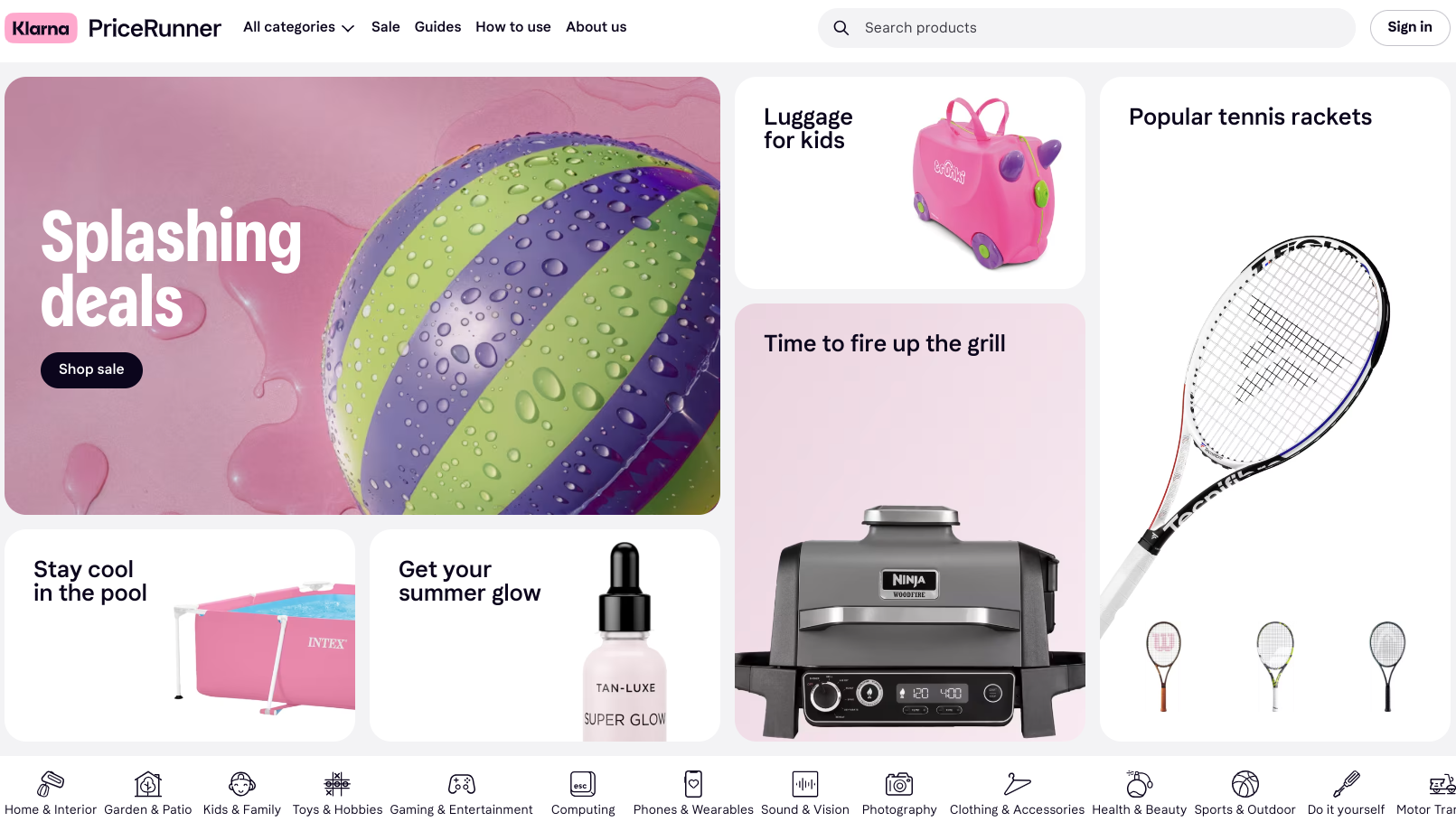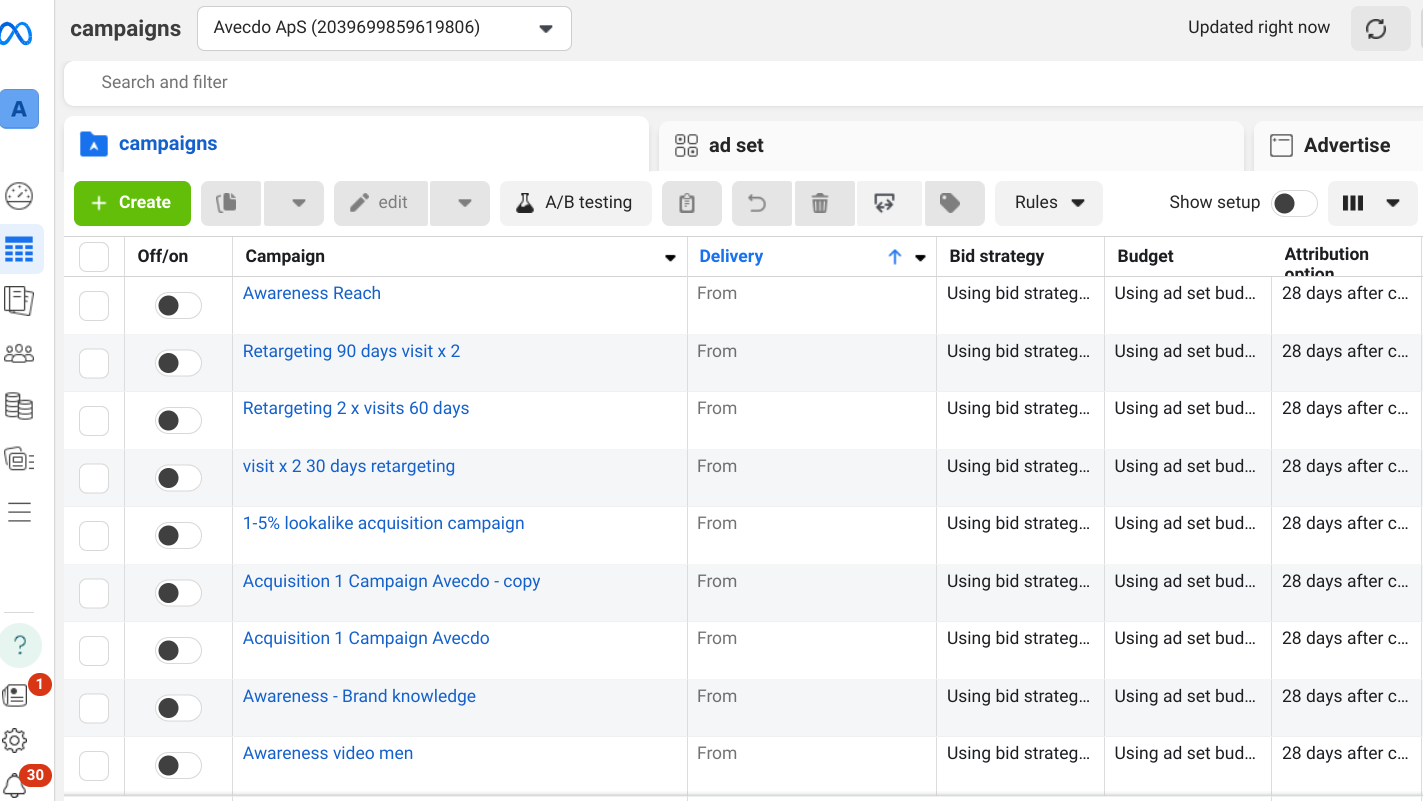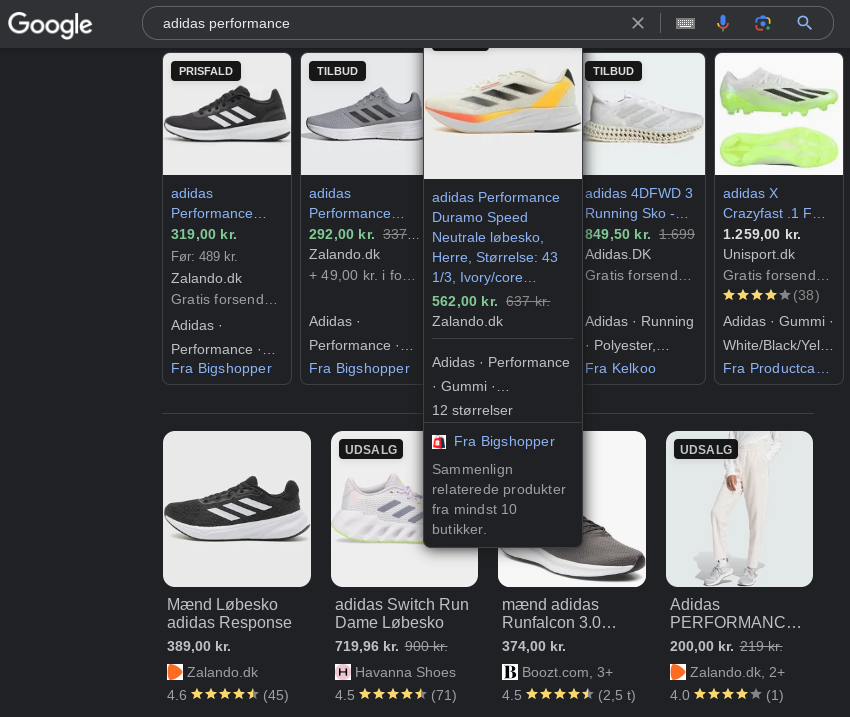
If you run an online store, you have probably heard the following expressions: “Product feed management”, “Product feed optimization” or “Product feed Customization”. There is a reason for that.
The quality and structure of your online store’s product feed determines whether your products appear in the best way possible. This concerns the right information, when appearing on price comparison sites, shopping platforms and in dynamic ads on Facebook.
This article is written for those, who administer an online store and would like a better understanding of what product feeds are – and how they can be customized to gain more traffic and sales.
Let’s start with the basics…
What is a Product Feed?
On your online store, the products are shown with titles and descriptions in various font sizes combined with pictures, which the visitors can zoom into.
The prices of the products are shown in a specific spot of the layout. In the case of several variants of a product, the visitors can choose the desired one in an intuitive dropdown menu.
If a product is on sale, the standard price has a stroke over it and the discounted price is marked with green, orange or yellow. Also, the store does not show products that are out of stock.
Regardless the looks of an online store, all its product information – and much more – is placed in an underlying database. This can be extracted in a product file, with a structure similar to an Excel sheet.
Each column contains specific data about the product – it can be anything, such as the product ID and price or its color and stock availability. The document may contain data of millions of products – which it in some cases does!
“How is the product’s picture inserted?”, may you think? The answer is, that it does not. Instead, the document contains the link address to the picture, which of course is just a text.
Platforms like PriceRunner can read such files and transfer the product data to their own databases to show your online store’s products.
It is super intelligent!
The problem is simply, that the product information on an online store is not static. There will be contentiously new products, price- and product stock changes.
If you have your products listed in Google Shopping, it is a shame if you pay per clicks to products that are out of stock. The same with your listed products at PriceRunner, with prices higher than the competitors, if it currently is lower.
Many online stores are missing out sales associated with Black Friday, simply because they too rarely update the product information sent to the different platforms – which is a shame!
Why not update the information every time, or moreover in real time? It is possible!
As an administer of an online store, you do most likely not have time to export a product file from each online store every day, to all trading platforms. Therefore, a product feed is a brilliant idea.
Corresponding to a product file, the product feed is updated contentiously – e.g. every hour or day. Therefore, it ensures that the product’s information is automatically updated on the relevant platforms, without you doing anything.
A feed is typically accessed by an URL-address (e.g. avecdo.com/productfeed.xml), ending on an .xml, .cxv, .txt or similar formats. In some cases, the feed is set up in the way that you must log in to access it. If so, the trading platforms will ask for login information to access it.
But it is important, that the data feed is set up properly – i.e. that it contains the correct information. Here comes a bigger challenge for those who wants to transfer their online store’s products to all platforms, through a data feed: The platforms have different requirements to what the feed should contain.
Managing Product Feeds
It is here, the concept “product feed management” become relevant. Although, in some cases it is possible to use the same product feed for multiple platforms, it is a good idea to make explicit product feeds for the different platforms. These should meet the platforms requirements.
You can pay a developer to produce the various feeds, but many online stores uses data management tools, like Avecdo, to manage their product feeds. By this, the right information is transmitted to the multiple platforms.
Avecdo have integrated templates, so you do not have to consider which fields that should be included in the product feeds for the multiple platforms. However, having knowledge about the various types of data fields, may be an advantage for you.
The Three Types of Data Fields
The three types of data fields are listed below.
Mandatory Fields
These fields, which are a necessity to the platforms, are represented in the product feed. If these fields are not represented, the platforms reject the feed and the transmission of your products.
It varies, which fields the platforms require. E.g. Google specific requires that a field, named google_product_category, is represented for certain product categories, whilst Facebook just recommend this. Although, Google may accept that the products’ brand is excluded in the feed, if the products do not have a brand (this applies for artworks or CDs etc.).
Facebook does not accept products where the brand (or i.e. ISBN of books) is not specified. If you have products without brands, you need to include a fixed text, like “This is a brand” in the brand field of the product feed, to be used for Facebook.
Recommended Fields
These are fields which is not a necessity to the platforms, but is a good idea to include in the feed, if you can.
If you sell perfumes, it is relevant to include e.g. a data field with Gender in the feed, so Facebook only target men’s fragrances to men – and women’s perfumes to women.
Each platform has their own sets of fields, which they recommend you to include if possible. The more data about your products that is transferred, the better the platforms shows the right products, to the right people. This results in a better user experience on the platforms, as well as additional sales by the online stores.
Custom Fields
I once worked with a customer who only wanted to show products on sale in the dynamic ads on Facebook.
This would be solved by developing a dedicated feed to the products on sale, but an easier solution was to insert an additional field in the customer’s data feed. For Facebook, it was named “on_sale”, where it previously was mentioned by “true” for products on sale and “false” for products at regular prices.
By additional fields in the data feed, we could set up a product filtration to adapt with the setup of the dynamic ads so only the products with “on_sale” were mentioned “true” and were included in the ads.
Optimizing Product Feeds
One thing is to create various product feeds, which contain the fields that the trading platforms require. Another thing is to adapt it, to reach better results.
Following are some examples of how you can gain a better return on investment (ROI), by adapting your online store’s data feed, through only one service like Avecdo:
Mapping the Categories
Most trading platforms have their own categorizing of the many products on the market, and it is far from certain that they match the categorization at your own online store.
What you may call “Men’s blazers” are maybe named “Blazers” at PriceRunner, and “Formal wear” at Kelkoo.
By matching your categories and subcategories with the categories and subcategories used by the individual trading platforms, it is possible to improve your sales significantly.
When your products are categorized correctly, it is the most relevant users who find them. Because of this, the traffic from the trading platforms will be more likely to convert into sales and improve your earnings.
Improving Product Titles
Have you ever seen a product on PriceRunner whose title appeared strange? It is probably because the title did not make any sense, beyond the online store’s context.
At gopro.com the titles “Hero5 Black”, “Hero5 Session” and “Hero Session” makes sense, but as soon we move beyond the GoPro universe, the titles face its challenges.
One can argue that GoPro’s products are known well enough, but if a person scrolls down through the products in the category “Movie cameras” on an external platform, and see “Hero5 Black” as the title, it is not certain that the product is recognizable. It is the brand of GoPro, which the user might have heard about among friends – not the name of the product.
Excluding Non-Profitable Products
Many trading platforms require commission of the products sold through their websites. It is their business model – which most online stores are pleased with.
Although, it does not change on the fact that most online stores have products, where margins simply become negative if commission is drawn.
If your online store sell carriage free, it is probably not profitable for you to gain a 15 $ order. Especially not, if the commission by the trading platform is drawn, who provided you the sale.
When you customize your product feeds to the individual platforms, you may consider excluding cheap or low-profit products, to not lose money on these.
On Facebook, it might make sense to include these products, whilst they become handy to attract people into your online store, who also buys more products.
At Amazon, where people actively searching for a particular product, they should probably be excluded.
By customizing your product feeds, you can secure that you are only selling products through the trading platforms where you actually earn a profit, with or without commission.
Showing the Right Picture
Facebook requires square pictures for Carousel ads, whilst traditional Link ads require elongated pictures.
If you have an online store with clothes, you might want to show full scale pictures at Miinto and not just a square version.
Products in online stores do most likely have several pictures attached. To show the desired and correct picture of a product, you simply creating unique product feeds to the individual trading platforms.
Increase Sales by Product Feeds
Larger trading platforms require product feeds, like Amazon and eBay, but does also support you to use a wider range of other services, which helps you to sell more.
Google Shopping
Connect your online store through a product feed to Google Merchant Center and create a Google Shopping campaign through the AdWords control panel. Once done, your products will be displayed on Google for searches on products and in Google Shopping’s section. You pay for each click that Google delivers, just like Google AdWords.
Setup your product feed in Facebook’s Business Manager and gain access to a wide range of cool features! First, you may setup dynamic ads, where the most recent products automatically are retrieved from your online store, through the product feed. Out of stock products is removed. In addition, you can “tag” your products in your posts on Facebook and Instagram! If you upload a video, where you talk about your products, it is possible to show these beneath your post and gain more traffic – for free.
In conclusion, I believe that you in the near future will be able to include your products in your Facebook page’s Shopping section – directly from the product feed.
PriceRunner
Does your online store contain competitive prices? Ensure to add your products to PriceRunner through a dedicated product feed! PriceRunner bills either per click or per conversion. You decide the monthly budget and how much a click / a conversion is worth for you. The higher a bid, the higher you are placed in the search results.
HeyLoyalty
Why insert your products in your newsletter manually, when you can do it automatically? HeyLoyalty gives you the opportunity to establish a dynamic newsletter where products are dynamically shown, according to the receivers buying behavior. If a man visit your online store and looked at blazers, you can establish newsletters in a way, that shows him blazers on sale etc.
I could mention hundreds of other channels where you can generate additional sales. Common to them all, is the use of a product feed to retrieve your online store’s products.
Avecdo allows you – with one click – to create product feeds that meet the needs of the individual channels.
Get started now – and give consumers the opportunity to discover your products through all sorts of channels.




